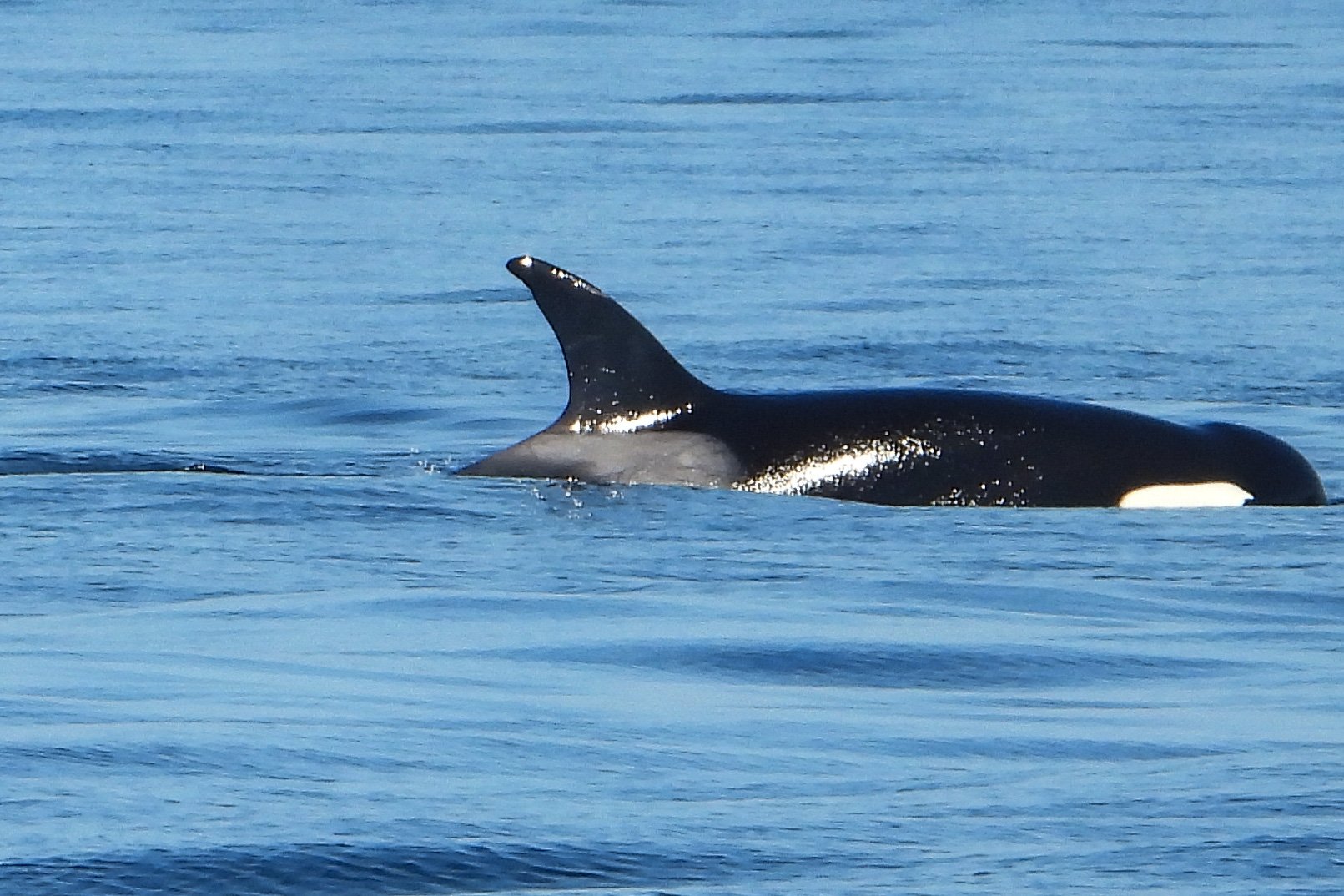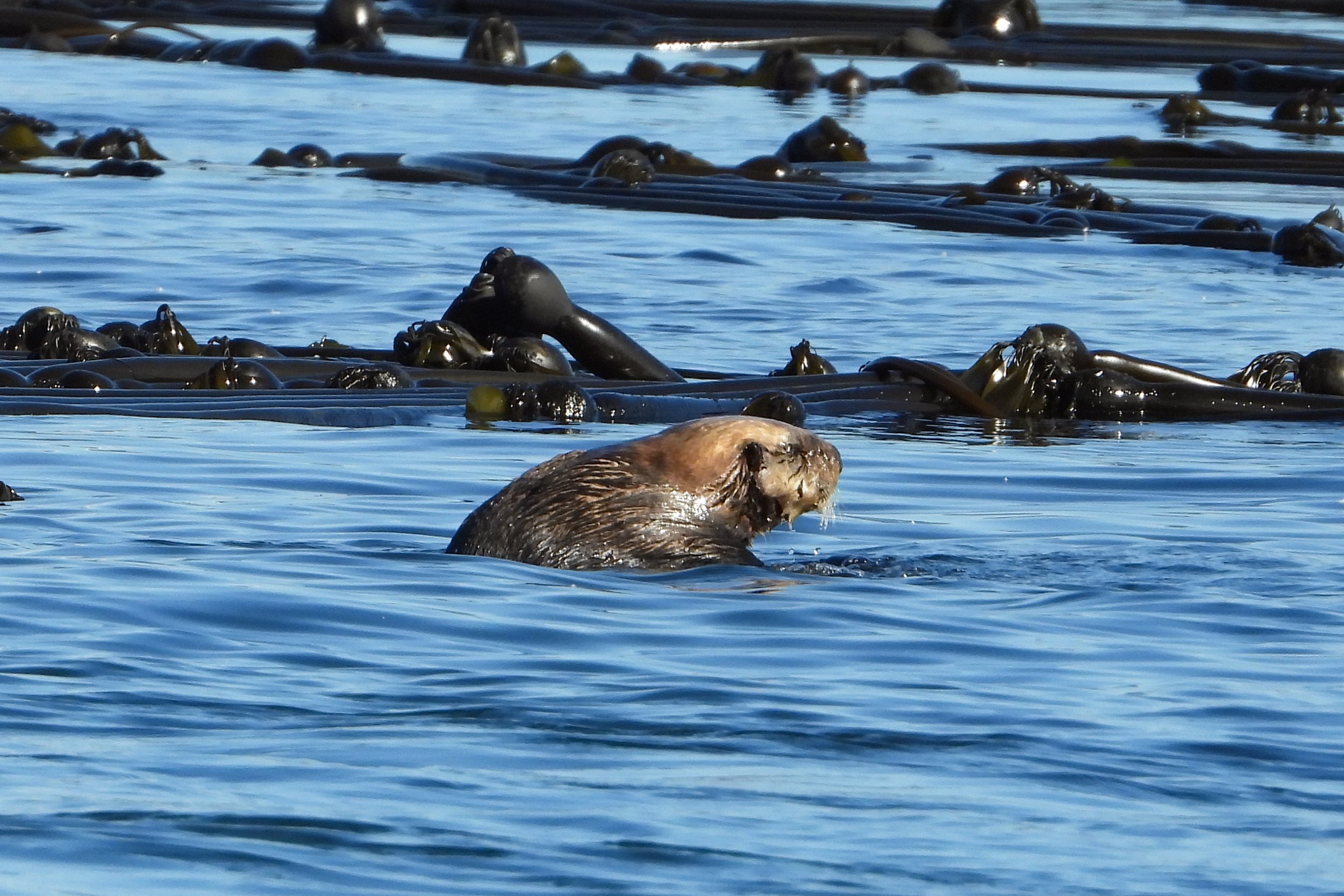September 5, 2023: T65As | Haro Strait
Date: Tuesday, September 5, 2023
Location: Strait of Juan de Fuca & Haro Strait
Weather: Sunny, 64 degrees Fahrenheit with 6mph winds from W
Tide: Flood
Pods/Matrilines/Individuals: T65As
Total Whale Count: 6
Behaviors: Traveling, foraging
Boat Count: 3 (3 whale watch boats)
We took another trip out on the water with Outer Island Excursions and were joined with our colleagues from Sunset Bay Beach Camp, in celebration of a successful summer. We sailed out of Skyline Marina on the afternoon departure.
Earlier in the day reports of the T65As traveling northbound in Admiralty Inlet and off of Port Townsend came through, so the captain and naturalists decided to go locate them. After a short boat ride down the south end of Lopez and San Juan Island, we found the T65As where the Strait of Juan de Fuca connects to Haro Strait.
It appeared that all 6 members of the T65As were present, with T65A5 being offshore and on his own, however we did not get photo confirmation of his presence. When we arrived the 65As were in travel mode, then quickly shifted into a hunt. The family broke up into two separate groups that simultaneously hunted, made a kill, and prey shared amongst one another. The group closest to us was comprised of T65A2 Ooxjaa (male b. 2004) and his younger sister T65A4 Ellifrit (female b. 2011), while the second group was comprised of mother T65A Artemis (female b. 1986), her second son T65A3 Amir/a (male b. 2007), and youngest calf T65A6 Callisto (female b. 2018). An interesting note, we once heard from a naturalist friend that T65A2 and T65A4 have a close bond, which is not always common amongst big brother and little sister siblings. So we noted that the two were hunting together, which is consistent with the observation that they are close.
There was much surface activity amongst both groups, followed by at least four moonwalks, a behavior where the orca will surface backwards in what appears to look like the dance move called moonwalking. This is a unique behavior to transient, also called Bigg’s killer whales, and they do this to de-glove their prey (remove the hide). T65A2 and T65A conducted very smooth moonwalks, while the youngest T65A6 had a bit of a different style, which indicated to us that she is still learning or practicing the technique.
After the whales finished their meals, they continued northbound in travel mode up through Haro Strait where we left them. Upon leaving we stopped at Whale Rock where we saw many steller sea lions hauled out, followed by a stop at Bird Rock in search of the sea otter that has been frequenting these areas since last summer. We were successful in finding the sea otter at bird rocks and observed it rolling in the kelp beds. Upon returning to the marina we passed a large group of harbor porpoises that were breaching out of the water, a behavior they do for mating.
T65As: T65A "Artemis" (female b. 1986) and her offspring, T65A2 "Ooxjaa" (male b. 2004), T65A3 "Amira" (male b. 2007), T65A4 "Ellifrit" (female b. 2011), T65A5 "Elise" (male b. 2014) and T65A6 "Callisto" (female b. 2018)
Learn more about the T65As and other matrilines on our Transient page.
Download the free Department of FIsheries Canada Bigg’s Transients ID guide




















